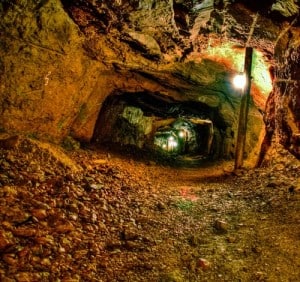
Barrick Mining needs connectivity deep underground, but latency in that situation is a real challenge. Take a look at how they used WiFi to solve the challenge.
Name of Organization: Barrick Mining Company
Industry: Mining
Location: Toronto, Ontario, Canada
Opportunity or Challenge Encountered: Barrick Mining, the world’s largest gold mining company, generates a lot of data. The company has interests in 13 mines in 10 countries, employing more than 11,000 people.
The company has employed wired and wireless networking technology in its mines for years, a recent case study reports. However, latency has been an issue. Collecting data from connected vehicles and underground equipment such as pumps and air-quality stations, and transmitting it across long distances without losing speed, is not easy in remote, disconnected environments where mining activity can be found. In addition, due to the nature of mining, work areas are constantly shifting or expanding.
Barrick wanted to make it easier for its employees to get the insight they need, real time, to make better, faster decisions and work together more effectively, using timely, in-depth data.
How They Met the Challenge: WiFi is the key to connectivity. To provide faster access to its data, Barrick turned to Cisco wireless and collaboration solutions. For example, at the company’s Cortez Gold Mine, Cisco Aironet 1500 Series Wireless Access Points have been configured to deliver carrier-grade performance across long-range areas to connect devices, people, and vehicles throughout the site, according to the case study. The network covered about 85 percent of the mine’s 13.5-mile tunnel system at the time the case study was written. The wireless access points within the mine connect to Cisco Industrial Ethernet 2000, 3000, and 4000 Series Switches, intended to function in harsh environments.
Benefits from This Initiative: The connectivity enabled by the network provide mine operators and their employees’ real-time views of data and events within the worksites. Interactive data rooms outfitted with real-time data, analytics, and predictive tools provides decision-makers real-time Insight from people and equipment everywhere. The company is also setting up an enterprise-wide analytics hub to support performance management, and financial and operational benchmarking.
Barrick’s underground WiFi network also supports greater levels of visibility, safety, and dependability. This provides managers the ability to see and understand what’s happening in real time by tracking equipment, people, and ore, the case study relates. “Realistically, until we have real-time data, we can’t make accurate and fast decisions about moving our people or equipment to where they’re needed, so this is going to speed up those processes and enable the business to work more efficiently,” says Michelle Ash, chief innovation officer for Barrick. “That’s essentially what WiFi is: enabling the business to analyze and direct all of those things instantly.”
See also: In Barcelona, every bus is high tech with WiFi
Managers can employ data visualization tools that confirm equipment availability and usage during a shift to optimize production. In early trials with detailed data, sites gained about 33 minutes of active productive time per day, creating a daily throughput gain of 198 tons, the case study reports.
In addition, the WiFi solution also enables remote operation from the surface, meaning miners are spending less time underground, reducing their exposure to risks. The solution includes the use of tele-remote and autonomous technology that enables operators to operate equipment from the surface via remote control. Plus, “when miners are working remotely, there’s no need to clear them away from blasting and other hazardous underground activities, so production keeps moving forward smoothly,” the case study noted. “In addition to enhancing safety, automated drilling has added between three and 13 additional drilled tons per day.”
The solution also enables predictive maintenance, providing visibility into issues such as engine oil pressure or faulty cooling systems before they can escalate. Discovering and addressing these issues before a failure occurs can save up to 72 hours of downtime, or a $500,000 engine replacement cost. “If a piece of equipment does break down, underground operators can get immediate video support from off-site experts anywhere in the world, using a WiFi table or other devices,” according to the case study. “Support staff can see the equipment and help identify and fix the issue. Miners can even order spare parts right from their tablet, to save time and minimize any service disruptions.”






























